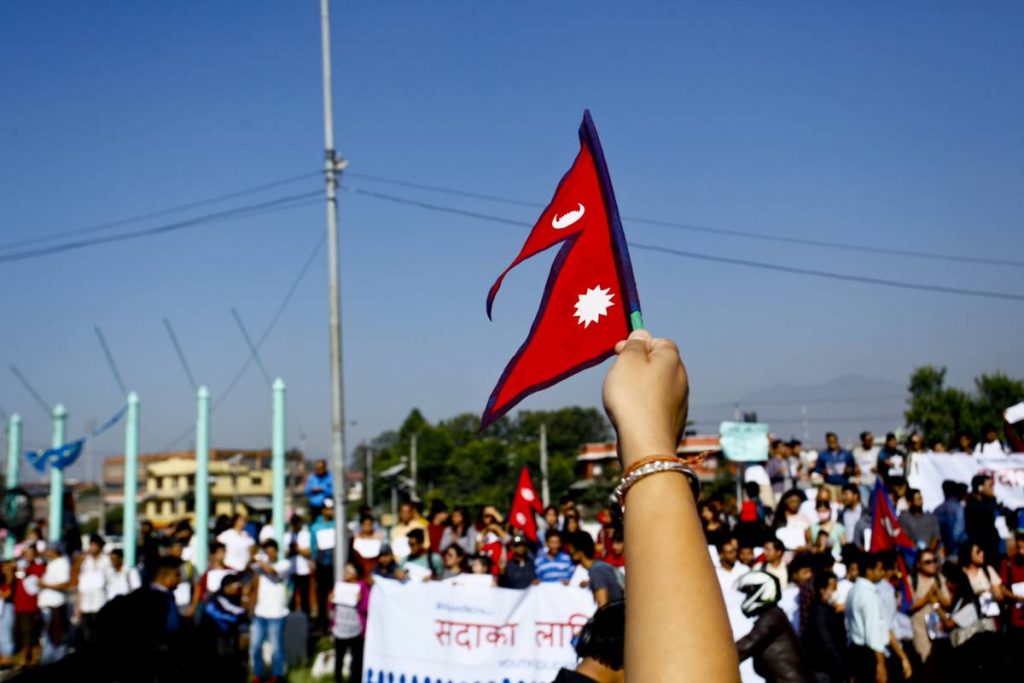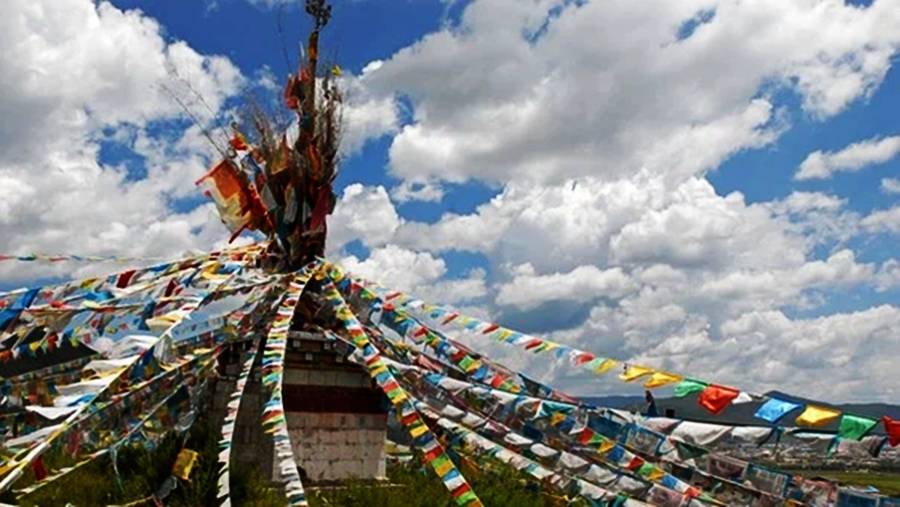The kingdom held its first elections in 2007 and the following year it became a constitutional monarchy guided by Buddhism…reports Asian Lite News.
Earlier this year, Chinese encroachment into Bhutanese territory in the form of four civilian village settlements was reported. These territorial excesses, characteristic of a Chinese disregard for sovereignty of countries in its borderlands, have been going on for years, but only recently have they come under international notice.
For Bhutan, a small Himalayan kingdom wedged between two Asian superpowers, navigating global geopolitics is not an easy task. Tensions run high at the India-China border, and Bhutan finds itself in the complicated position of safeguarding its interests while balancing between its two big neighbours.

As far as India is concerned, Bhutan is one of its few unproblematic friends in the neighbourhood with whom it enjoys mutual trust and encourages cooperation. From China’s point-of-view, undermining Bhutanese territory equals challenging India in its own neighbourhood. Xi Jinping has been vocal about pushing into new frontiers around the Tibetan borderlands, and the CCP has a new weapon under its belt to accomplish this — Buddhism.
Over 75 per cent of the Bhutanese population is Buddhist. Although heavily influenced by Tibetan culture and practices, the strand of Vajrayana Buddhism (which is the state religion) of Bhutan finds the greatest connection to and influence from 8th century Indian precepts. Buddhism finds echo in Bhutan’s domestic as well as its foreign policy.
The kingdom held its first elections in 2007 and the following year it became a constitutional monarchy guided by Buddhism. The Constitution is based on values derived from Buddhist philosophy, the International Convention of Human Rights and inspired by a comparative analysis of 20 other modern constitutions. Buddhism also guides the famous development philosophy of Gross National Happiness (GNH).
In 1972, the IV Druk Gyalpo (title of the Bhutanese king) made the famous declaration, “Gross National Happiness is more important than Gross National Product”.
Since then, the idea of GNH — that a country’s wealth is holistic and not simply material — has put Bhutan on the world map.
At the 2021 Seoul International Buddhism Expo, Bhutan was the guest country with an exhibition titled The Happiest Buddhist Kingdom in the World.
Naturally, GNH has attracted considerable attention from the international community, and University of Maryland’s Jessica Locke says it is because this philosophy “directly challenges the dogmatism of conventional capitalist thinking. GNH offers a refreshing alternative to the popular assumption that increasing national wealth is, independent of any other metrics, a social good.” As part of other modernizing initiatives, Bhutan’s royal family has actively advocated for democracy. When the constitution was ratified in 2008, the Druk Gyalpo actively toured the country to garner support for democracy, going as far as to say that absolute monarchy was not suited to the needs of the 21st century. By adapting the tenets of Buddhism to the needs of modern society, Bhutan has successfully managed to retain its culture in the face of globalized, one-size-fits-all modernity.
The centrality of India in Buddhist history gives India and Bhutan a free-access cultural pass to each other. Earlier this month, a delegation from Bhutan visited Nalanda University in Bihar as part of a summit organized by Indian Council of Cultural Relations (ICCR). The symbolic significance of this visit is immense as the ancient Nalanda University (after which the new one is modelled) was a Buddhist monastic centre of learning and one of the first residential universities in the world. In 2018, on the occasion of the completion of 50 years of diplomatic ties between India and Bhutan, the Queen Mother of Bhutan remarkedthat Buddhism was India’s greatest gift to the Bhutanese people.
She also said, “Following the arrival of Buddhism, great Buddhist masters from India, most notably Guru Padmasambhava travelled to Bhutan. The teachings of Lord Buddha and Guru Padmasambhava continue to influence the lives of every Bhutanese”, referring to the 8th century Indian sage who is considered the founder of Tibetan Buddhism. In fact, a conference in the sage’s honour was organized in Delhi in 2019 and it was attended by experts from Nepal, Bhutan and other Buddhist regions besides India. A statue of Buddha was alsogifted to Bhutan by India in 2019 to honour the birth anniversary of Guru Rinpoche (another name for Guru Padmasambhava). Indian Prime Minister Narendra Modi chose Bhutan for his first official state visit as PM in 2014, signalling the Himalayan kingdom’s importance in his ‘Neighbourhood-First’ policy. India is Bhutan’s largest trading partner and also the most favoured destination for Bhutanese students. According to the Indian Ministry of External Affairs, a number of Bhutanese pilgrims travel to the holy Buddhists sites (Bodh Gaya, Sarnath, Kushinagar, Sravasti, Rajgir, Sankasia, Vaishali) in India.

In recent years, China has been trying to use Buddhism to gain ground in South Asia and other parts of the world. Its efforts are aimed at projecting itself as a leader in the Buddhist world, in pursuit of two possible objectives — undermining India’s role in Buddhist’s history and inserting itself in the Buddhist narrative to gain tourism and cultural linkages. China has attempted to propel Lumbini in Nepal (the one Buddhist holy site that is not in India) to the forefront by investing heavily in infrastructure there. Even though Bhutan’s northern borders with the Tibetan Autonomous Region (PRC governed TAR) have been closed since 1959 (as opposed to the southern borders which are open for free trade and movement to and from India), China has managed to annexe territory and settle villages in the Bhutanese highlands. China is also propagating the mythological conception of Zhangzhung in the western TAR as a historical fact. Some argue that this is a strategy to historically alienate Tibet and Bhutan from India by providing a counter-narrative to the existing claims that situate India as the cultural and religious origin of present Tibet.

There is a view that the Indian establishment should counter the emerging Chinese influence in Bhutan. However, the fact of the matter is that the average Bhutanese sees India as the holy land of Buddha’s enlightenment and not the Asian giant that is its neighbour.
The geographical inclination of Bhutan towards India was solidified when it lost the link to Tibet as the other holy land, as well as the main trading partner, before the 1950s. According to Karma Uru, President of the Centre for Bhutan Studies in Thimphu, “India is still regarded as the origin of Buddhist knowledge and literature, translated and transferred to Tibet and Bhutan. Indo-centric Buddhist practices including Kashmiri and Bengali tantrism continue in remote sites in Bhutan, while they have become relatively eclipsed in India.” The path of Buddhist outreach is already laid-out in Bhutan, it is time perhaps India should rediscover it.
ALSO READ-Deuba re-elected as President of Nepali Congress for second time

